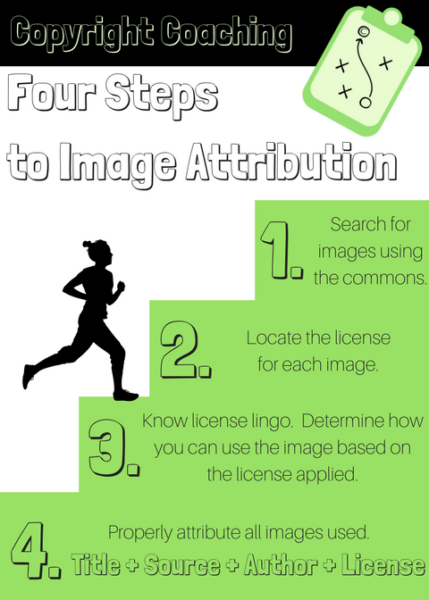Ever wondered how those stunning images you see online are licensed for use? Shutterstock is one of the biggest platforms offering millions of high-quality images, videos, and music tracks. But just because you find an image there doesn’t mean you can use it freely everywhere. Understanding how licensing works on Shutterstock is key to making sure you’re respecting creators’ rights and avoiding legal trouble. Let’s break down what
What Is Copyright and Why Is It Important for Shutterstock Images

Copyright is a legal concept that grants creators exclusive rights over their original works, like photographs, illustrations, and designs. When someone takes a photo or creates artwork, copyright automatically applies, giving them control over how that work is used, shared, or reproduced. This means that if you want to use someone’s copyrighted image, you typically need permission, often in the form of a license.
For Shutterstock images, copyright protection is crucial because it ensures that photographers and artists are compensated for their work. Without copyright, anyone could copy and use images without giving credit or paying, which would discourage talented creators from sharing their work. Shutterstock helps protect these rights by offering licensed images that users can legally utilize, provided they adhere to the licensing terms.
Understanding copyright also helps you avoid unintended infringement. Using an image without permission can lead to legal issues, fines, or even lawsuits. That’s why it’s important to know that most images on Shutterstock are protected by copyright, and using them requires a proper license. Shutterstock’s licensing system makes it easier for users to legally access and use images by providing clear terms, so everyone knows their rights and responsibilities.
In a nutshell, copyright is the backbone of intellectual property rights in the digital age, ensuring creators are recognized and rewarded. For Shutterstock users, respecting copyright means choosing the right license type, giving credit when needed, and understanding the scope of permitted uses. This not only keeps you on the right side of the law but also supports the creative community that makes the visual world so vibrant and diverse.
Types of Shutterstock Image Licenses and Their Implications
When you’re browsing Shutterstock, you’ll quickly notice that not all images are created equal—especially when it comes to licensing. Understanding the different types of licenses is crucial to ensure you’re using images legally and avoiding any unexpected legal hiccups down the road.
Shutterstock primarily offers two kinds of licenses:
- Standard License
- Enhanced License
Standard License
The Standard License is the most common choice for most users. It allows you to use images in a wide range of projects, such as websites, social media, presentations, and print materials, but with some restrictions. For example, the Standard License typically limits the number of copies or impressions you can make—usually up to 500,000 copies. It also restricts the use of images in products for resale, like t-shirts or posters, unless you upgrade to an Enhanced License.
Implications of a Standard License include:
- Limited distribution and reproduction rights
- Cannot be used for merchandise intended for resale beyond a certain quantity
- No rights to modify or transform images in a way that could infringe on the original rights
Enhanced License
The Enhanced License provides more flexibility, making it suitable for commercial products, merchandise, or high-volume campaigns. With this license, you can:
- Use images in products for resale with no quantity limits
- Include images in items like clothing, mugs, or packaging
- Access higher resolution images and extended rights
Implications include:
- Higher cost, reflecting the broader rights
- Ideal for large-scale advertising, product packaging, or commercial distribution
What Does This Mean for You?
Choosing the right license depends on your project scope. If you’re creating a personal blog or social media post, a Standard License might suffice. But if you’re launching a product line or a large marketing campaign, an Enhanced License is the safer bet.
Always read the licensing agreement carefully. Misusing a license—like using a Standard License image in a product for resale—can lead to copyright infringement issues, which can be costly and damaging to your reputation.
How to Properly Use Shutterstock Images to Avoid Copyright Infringement
Using Shutterstock images responsibly isn’t just about picking the right license—it’s also about following best practices to stay within legal boundaries. Here are some practical tips to help you use images properly and avoid copyright trouble:
1. Always Verify Your License Type
Before downloading and using an image, double-check which license you hold. Remember, Standard Licenses have restrictions that Enhanced Licenses do not. Use the image according to the license you purchased, and avoid repurposing images in ways that violate the license terms.
2. Use Images in the Intended Context
Follow the permitted uses outlined in the license. For example:
- Use in digital projects like websites and social media posts within the license limits
- Do not incorporate images into physical products for resale unless you have an Enhanced License
- Avoid modifying images in ways that could infringe on the original rights, such as creating derivative works without permission
3. Respect Model and Property Releases
If an image features recognizable people or private property, ensure it has the necessary model or property releases. Shutterstock generally indicates this, but it’s your responsibility to verify. Using images without proper releases can lead to legal issues, especially if the person or property is used in a way they didn’t consent to.
4. Keep Proof of Licensing
Maintain records of your Shutterstock licenses and downloads. This documentation can be invaluable if questions about your rights arise later. Digital receipts and license certificates are your proof of lawful use.
5. Avoid Using Watermarked or Unauthorized Images
Always download images directly from Shutterstock or authorized sources. Using watermarked images or images from unverified sources can constitute copyright infringement and lead to legal action.
6. Be Careful with Modifications and Derivative Works
Make sure any edits or modifications you make are permitted under your license. Some licenses restrict creating derivative works or require attribution if you do so. When in doubt, consult the licensing terms or contact Shutterstock support for clarification.
7. When in Doubt, Seek Legal Advice
If you’re unsure about how to use an image legally, especially for commercial purposes, consult with a legal professional. Better to be safe than facing costly copyright disputes later.
By following these guidelines, you can confidently leverage Shutterstock images to enhance your projects without risking copyright infringement. Remember, respecting intellectual property rights not only keeps you out of legal trouble but also supports the artists and creators who produce the content we enjoy.
Common Mistakes to Avoid When Using Shutterstock Images
Using Shutterstock images can be a fantastic way to bring your projects to life, but it’s easy to stumble into some common pitfalls if you’re not careful. Let’s go over a few mistakes that many people make—and how you can avoid them to stay on the right side of copyright laws.
Not Checking the License Type
One of the biggest mistakes is assuming all Shutterstock images are free to use however you like. Shutterstock offers different license types, such as Standard and Enhanced licenses, each with its own set of restrictions. Before downloading, always double-check which license you’re obtaining and ensure it matches your intended use. Using an image outside its license terms can lead to legal trouble down the line.
Overusing a Single Image
Using the same Shutterstock image across multiple projects or campaigns isn’t necessarily a problem, but overdoing it can be. If an image is widely used, it might lose its uniqueness and impact. Plus, if you plan to sell a product or service, relying heavily on a stock image might not convey the originality you want to showcase. Consider customizing images or creating original visuals when possible.
Ignoring Model and Property Releases
Some Shutterstock images feature recognizable people or private property. If you plan to use such images in commercial contexts—like advertisements or product packaging—you need to make sure they come with the proper releases. Without these releases, your use could infringe on individuals’ rights, leading to legal issues.
Using Images Beyond the Scope of the License
Many users make the mistake of thinking they can do whatever they want with Shutterstock images once downloaded. But licenses often specify how and where you can use images. For example, some licenses restrict usage in sensitive contexts, such as political campaigns or controversial topics. Always read and understand the license restrictions to avoid unintended violations.
Not Giving Proper Attribution (When Required)
While Shutterstock images generally don’t require attribution for most licenses, some contributors may specify otherwise. If you’re using images under a license that requests attribution, failing to credit the creator can be a breach of the license agreement. Check the license details for each image and give credit when required to stay compliant.
Legal Consequences of Copyright Violations with Shutterstock Content
It’s easy to think that copyright violations are just a minor infraction, but the truth is, the consequences can be quite serious. Whether you’re a blogger, small business owner, or a large corporation, understanding the potential legal fallout is crucial to protect yourself and your brand.
Cease and Desist Orders
The moment you use an image without proper rights, the copyright holder or Shutterstock’s legal team might send you a cease and desist letter. This is a formal request to stop using the image immediately. Ignoring this notice can escalate the situation, leading to further legal action.
Legal Damages and Fines
If the copyright owner decides to take legal action, you could be liable for damages. These damages can include monetary compensation for unauthorized use, which can range from hundreds to thousands of dollars per infringement. In some cases, courts may also impose fines or penalties as part of the judgment.
Injunctions and Court Orders
Beyond monetary damages, courts can issue injunctions requiring you to stop using the infringing content. This can disrupt your business operations, especially if the images are central to your marketing or branding efforts.
Reputational Damage
Legal violations can also harm your reputation. Being involved in a copyright infringement case might lead to negative publicity, loss of customer trust, and damage to your brand’s credibility. Staying compliant not only keeps you legally safe but also maintains your good standing in your industry.
Potential Criminal Charges
In extreme cases—like large-scale piracy or willful infringement—criminal charges might be filed. While rare, these can lead to fines, probation, or even jail time. That’s why it’s always better to play it safe and ensure you have the right licenses before using Shutterstock images.
In summary, respecting copyright laws when using Shutterstock images is essential. Avoid common mistakes, understand the licensing terms, and always stay informed about the legal implications. Doing so keeps your projects safe, legal, and professional in the long run.
Best Practices for Respecting Copyright When Using Stock Images
Using stock images like those from Shutterstock can be a fantastic way to enhance your content, but it’s super important to respect copyright laws. Not only does this keep you on the right side of legal boundaries, but it also supports the hardworking photographers and creators behind those images. Here are some practical tips to help you navigate this responsibly:
- Always Read the License Agreement: Before downloading or using any Shutterstock image, take a few moments to review its license. Shutterstock offers different types of licenses—Standard and Enhanced—that come with specific rights and restrictions. Knowing exactly what you’re allowed to do ensures you’re compliant.
- Give Proper Attribution When Required: Some stock images, especially those used in editorial contexts, may require attribution. Check the license details—if attribution is necessary, include credit to the photographer or Shutterstock as specified.
- Avoid Misuse or Alterations That Violate the License: Be mindful of how you edit or modify images. For example, some licenses restrict using images in a way that could be misleading or defamatory. When in doubt, stick to simple edits and avoid significant alterations that could infringe on the creator’s rights.
- Maintain a Record of Your Downloads and Licenses: Keep a copy of your license agreements and download receipts. This documentation can be invaluable if questions about your rights come up later.
- Use Images in the Correct Context: Don’t use stock images in a way that could imply endorsement or association with a brand or individual unless explicitly permitted. For instance, avoid implying a person in an image endorses a product unless you have explicit rights to do so.
- Be Careful with Sensitive or Trademarked Content: Some images may contain trademarks, logos, or sensitive content that could lead to legal issues. When in doubt, consult with legal counsel or choose images that are clearly free of such elements.
- Stay Updated on Copyright Laws and License Terms: Copyright regulations and stock image licensing terms can change. Regularly review Shutterstock’s policies and stay informed about best practices.
By following these simple yet effective best practices, you can confidently use Shutterstock images without risking copyright infringement. Respecting the rights of creators not only keeps you compliant but also fosters a respectful creative community.
Conclusion and Resources for Further Information on Image Copyrights
Understanding how copyright works when using Shutterstock images is essential for anyone creating content—whether for personal projects, commercial use, or anything in between. Remember, stock images are intellectual property, and respecting licensing terms is part of being a responsible user. By choosing the right licenses, giving proper attribution when needed, and following best practices, you help support the creators behind the images and avoid potential legal hassles.
If you want to deepen your understanding of image copyright, here are some helpful resources:
- U.S. Copyright Office: Their official website offers comprehensive guides and FAQs about copyright law. https://www.copyright.gov
- Creative Commons Licenses: Learn about different licensing options and how to use CC-licensed images responsibly. https://creativecommons.org
- Shutterstock Licensing Guide: Directly from Shutterstock, this resource explains their licensing options and best practices. https://www.shutterstock.com/licensing
- Legal Advice: When in doubt, consulting with a legal professional who specializes in intellectual property can save you from potential legal pitfalls.
Remember, respecting copyright isn’t just about avoiding trouble—it’s about honoring the creative work of others. With a bit of knowledge and mindfulness, you can confidently incorporate stock images into your projects, knowing you’re doing so ethically and legally. Happy creating!


